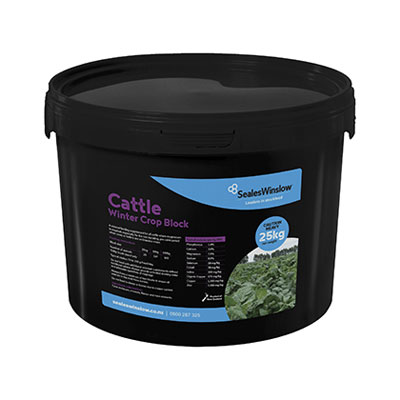Dairy Advice - Winter
Winter Crops
Are you prepared for the nutritional challenges that go hand-in-hand with winter crops? Here’s a handy overview of minerals that may need boosting.
The relatively high yield that’s achievable with various winter crops such as swedes, kale, turnips or forage rape makes for a range of quality feed options at a time when pasture is typically deficient in both quality and quantity.
Aside from a number of practical issues that arise with winter crop management, such as feed allocation and break fencing, there’s also the need to critically evaluate the animal’s diet to ensure their various requirements are met.
Taking a close look at the nutritional value of crops will identify deficiencies that need to be addressed. The water content in crops (and pasture) is an obvious culprit; as it can fluctuate day-to-day, it’s easy to under-estimate the dry matter content which in turn can lead to underfeeding. An adequate allocation of dry matter intake is an effective counter measure.
Focus on fibre and protein
Crops are generally low in fibre but high in rapidly fermentable energy, which when the diet isn’t balanced can lead to acidosis. Additional fibre helps stabilise the rumen pH by virtue of the increased saliva that is produced during chewing. A fibre source, such as hay or silage, therefore plays a critical role in supporting an optimal rumen function and preventing acidosis. Moreover, adequate fibre means that more heat is generated in the rumen; it helps maintain body temperature and essentially keeps the animal warm from the inside out.
Some winter crops also feature a low protein content which can easily be overlooked given that cows are typically not in milk during this time. Nonetheless, protein is crucial for foetal muscle development and for growing animals. Accordingly, the diet should include at least 12% CP/kgDM for cows and 15% for growing young stock.
Both fibre and protein may be effectively supplemented with good quality silage.
Minerals
Animals fed on winter crops also require additional mineral supplementation to avoid potential deficiencies from occurring. It’s an important time to give them a boost to help support liveweight gain, pregnancy and foetal development in time for spring calving.
There’s also the issue of minerals not being available to the cow because of antagonists that hinder their absorption. A typical scenario happens in winter when it’s common for cows to ingest quantities of soil along with winter crops. A nutritional problem arises from the iron contained in the soil – it’s an antagonist and hinders the absorption of copper.
Your mineral supplementation for winter crops should therefore include copper which is essential for foetal development. Zinc is a prerequisite for maintaining healthy hooves. Healthy hooves ensure that animals aren’t compromised in their ability to walk and consequently forage.
Iodine is also essential over the cold winter months, as it is low in the soil profile during wet periods. Brassica crops contain goitrogens, these can limit the uptake of iodine. An iodine deficiency can lead to still births and poor viability of newborn stock.
Additionally selenium is valuable to boost the immune system at this critical time. It specifically counteracts Red Water, a health issue that can affect cows that feed on brassicas.
When supplementing, it’s highly advisable to opt for organic or chelated minerals as those have a protective coating that enables minerals to be absorbed directly by the cow without interference.

Cattle Winter Crop Block
Cattle Winter Crop Block delivers essential micro-nutrients to balance the deficiencies of feeding winter crops to cattle at a time when other supplementation routes may not be practical.

